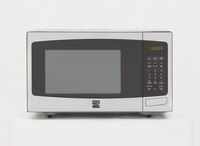
Photo from wikipedia
ABSTRACT Radio frequency (RF) heating has great potential for achieving rapid and volumetric heating in foods, providing safe and high-quality food products due to deep penetration depth, moisture self-balance effects,… Click to show full abstract
ABSTRACT Radio frequency (RF) heating has great potential for achieving rapid and volumetric heating in foods, providing safe and high-quality food products due to deep penetration depth, moisture self-balance effects, and leaving no chemical residues. However, the nonuniform heating problem (usually resulting in hot and cold spots in the heated product) needs to be resolved. The inhomogeneous temperature distribution not only affects the quality of the food but also raises the issue of food safety when the microorganisms or insects may not be controlled in the cold spots. The mathematical modeling for RF heating processes has been extensively studied in a wide variety of agricultural products recently. This paper presents a comprehensive review of recent progresses in computer simulation for RF heating uniformity improvement and the offered solutions to reduce the heating nonuniformity. It provides a brief introduction on the basic principle of RF heating technology, analyzes the applications of numerical simulation, and discusses the factors influencing the RF heating uniformity and the possible methods to improve heating uniformity. Mathematical modeling improves the understanding of RF heating of food and is essential to optimize the RF treatment protocol for pasteurization and disinfestation applications. Recommendations for future research have been proposed to further improve the accuracy of numerical models, by covering both heat and mass transfers in the model, validating these models with sample movement and mixing, and identifying the important model parameters by sensitivity analysis.
Journal Title: Critical Reviews in Food Science and Nutrition
Year Published: 2018
Link to full text (if available)
Share on Social Media: Sign Up to like & get
recommendations!